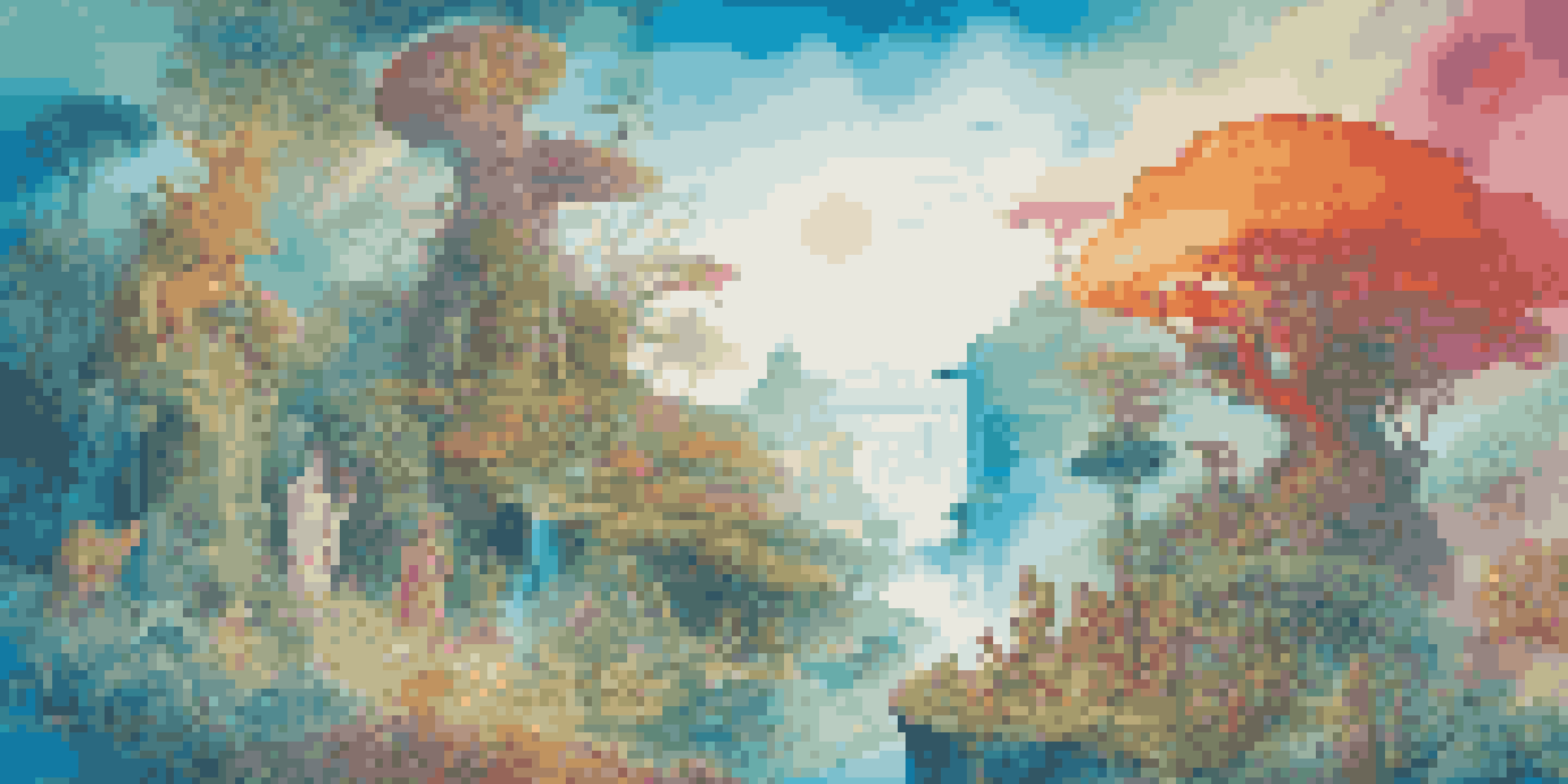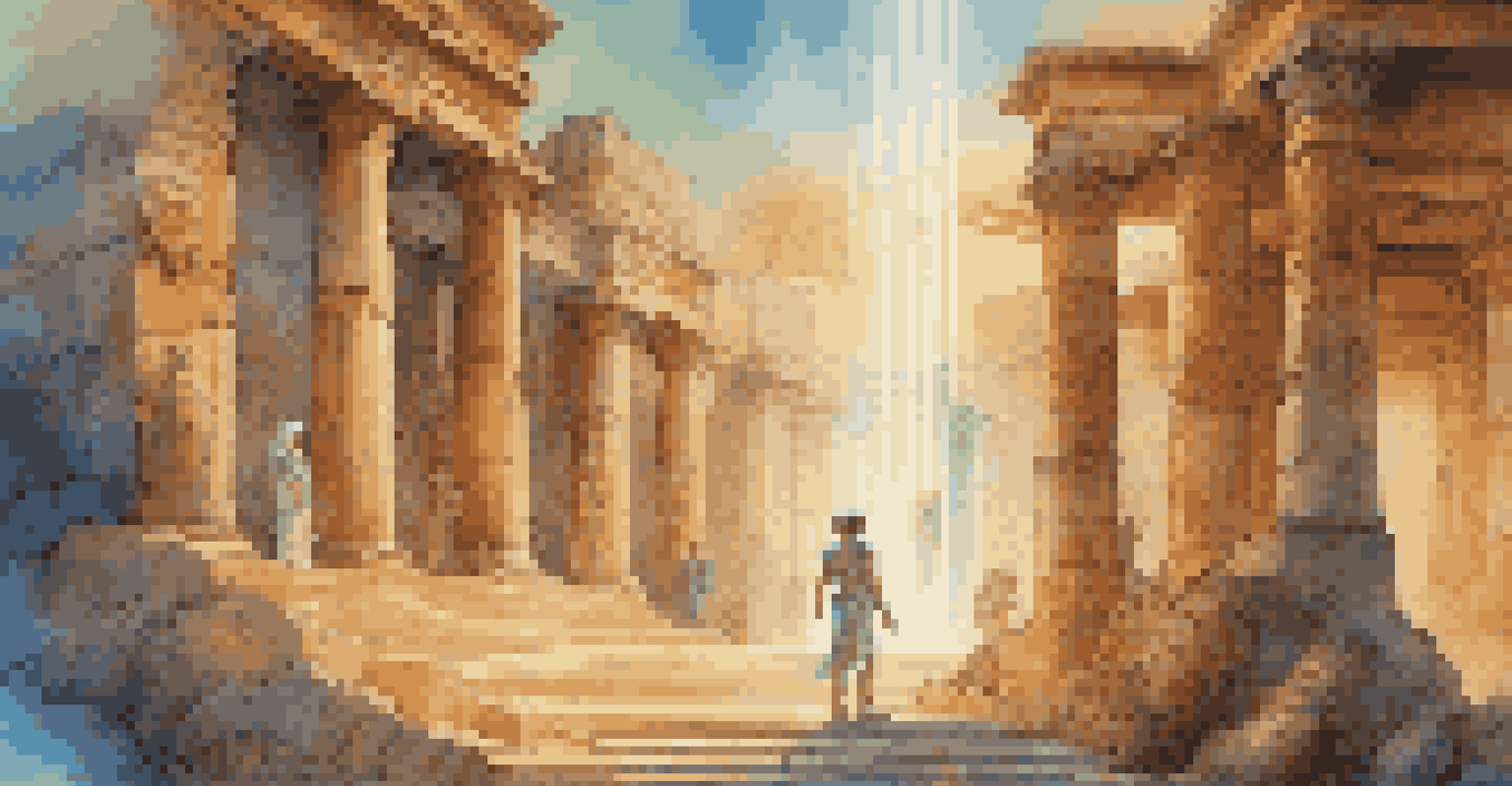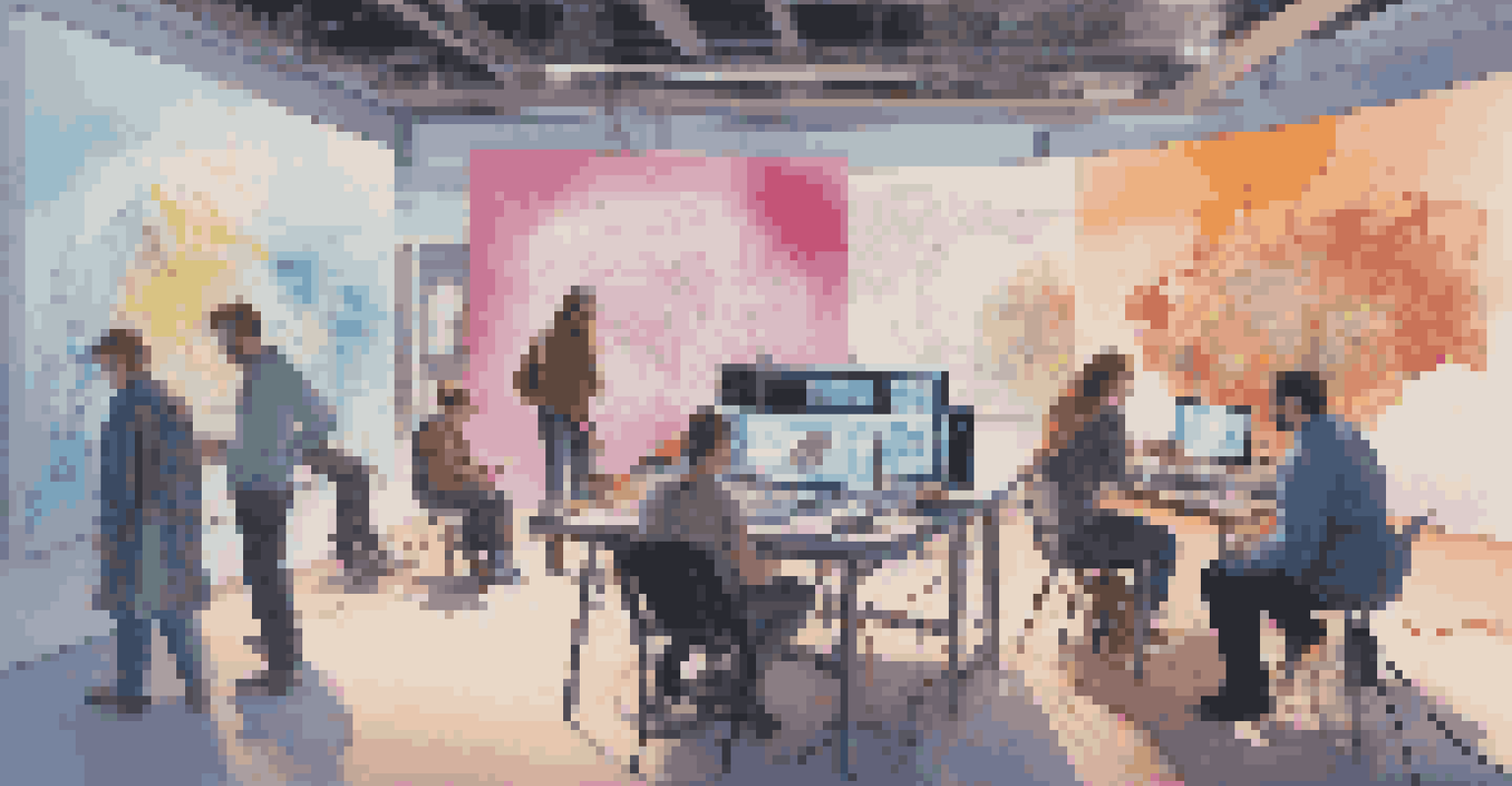Art and Myth in the Digital Age: New Representations Explored

The Evolution of Myth in a Digital Landscape
In the digital age, myths are not just ancient stories; they're constantly evolving narratives. With the rise of social media and digital platforms, myths can spread faster and take on new forms, influencing cultures in unprecedented ways. For instance, online fandoms create their own myths surrounding characters and universes, reshaping traditional storytelling into interactive experiences.
Myths are public dreams, dreams are private myths.
Moreover, digital technologies allow for the remixing of classic myths, making them relevant for contemporary audiences. Think of how the tales of ancient gods have been reimagined in popular films and video games. These adaptations not only honor the original stories but also invite new interpretations that resonate with today's values and issues.
Ultimately, the digital landscape serves as a canvas for reinterpreting myths, allowing for a more personal connection with these timeless narratives. As we engage with these stories online, we become part of a collective reimagining process, breathing new life into age-old tales.
Artistic Expression Through Digital Mediums
Digital art has revolutionized how we create and perceive art, merging technology with creativity. Artists now utilize tools like graphic design software, 3D modeling, and virtual reality to push boundaries and explore new dimensions in their work. This shift allows for more diverse expressions, as artists can experiment without the limitations of traditional mediums.

For example, interactive installations invite viewers to engage directly with the art, transforming passive observation into an immersive experience. Such interactivity can evoke emotional responses and provoke thought, making the viewer an active participant in the artistic narrative. This blurs the line between creator and audience, fostering a deeper connection.
Myths Evolve in Digital Spaces
Digital platforms allow myths to be reinterpreted and remixed, creating interactive experiences that resonate with contemporary audiences.
As artists embrace digital platforms, they also reach wider audiences, breaking geographical barriers. Online exhibitions and social media provide a stage for emerging artists, creating a vibrant global art community that thrives on collaboration and innovation.
The Role of Social Media in Shaping Contemporary Myth
Social media platforms have become the modern-day storytellers, shaping and reshaping myths in real-time. Viral trends, memes, and hashtags can quickly elevate ordinary events into cultural phenomena, creating new myths that resonate with a digital audience. For instance, the rise of internet memes has transformed everyday moments into shared narratives that reflect societal values and humor.
Art is the most beautiful of all lies; it is a means of revealing truth.
These platforms also allow for the democratization of myth-making, where anyone can contribute to a larger narrative. User-generated content allows individuals to share their interpretations and experiences, enriching the mythological landscape. This collective storytelling fosters community and connection, as diverse voices come together to create a more inclusive narrative.
However, the speed at which these myths evolve can also lead to misinformation or diluted messages. It's essential for consumers of digital content to critically assess the narratives they engage with, ensuring that the myths they embrace align with their values and understanding.
Digital Narratives: Merging Reality and Fiction
Digital narratives blur the lines between reality and fiction, creating immersive experiences that challenge our perceptions. Augmented reality (AR) and virtual reality (VR) allow users to step into alternate worlds, engaging with mythological themes in a way that feels tangible and real. This fusion of technology and storytelling offers a new medium for exploring complex human experiences.
Take, for example, VR experiences that place users in the shoes of mythological figures, allowing them to navigate challenges and decisions in a virtual realm. This not only deepens understanding but also evokes empathy, as participants explore the motivations and struggles of these iconic characters. The result is a profound exploration of identity and human emotion.
Art Transformed by Technology
Digital mediums enable artists to explore new forms of expression, breaking traditional boundaries and fostering global collaboration.
As technology continues to advance, the potential for new forms of storytelling expands. Digital narratives challenge us to reconsider our relationship with myths, encouraging exploration of deeper themes and fostering a sense of wonder and curiosity.
The Impact of Blockchain on Art and Ownership
Blockchain technology is revolutionizing the way we think about art ownership and authenticity in the digital realm. By providing a decentralized ledger, artists can establish provenance and ensure their work is recognized and valued. This is particularly significant in the age of digital reproduction, where copies can easily outnumber originals.
Non-fungible tokens (NFTs) have emerged as a new way for artists to monetize their digital creations. By selling their work as NFTs, artists can retain control over their creations and potentially earn royalties each time their work is resold. This shift empowers creators and fosters a more sustainable art ecosystem.
However, the rapid rise of NFTs also raises questions about sustainability and accessibility. As more artists enter the digital space, it's crucial to consider the environmental impact of blockchain technology and ensure that opportunities remain open for all creators, regardless of their resources.
Cultural Appropriation vs. Cultural Appreciation in Digital Art
In the digital age, the lines between cultural appropriation and cultural appreciation can often blur, especially in art. Artists draw inspiration from diverse cultures, but it's essential to navigate this landscape thoughtfully. Cultural appropriation involves taking elements from a culture without understanding or respecting their significance, often leading to commodification.
Conversely, cultural appreciation involves engaging with and honoring the traditions and histories of a culture. This can lead to meaningful collaborations and dialogues that celebrate diversity. For example, digital artists can collaborate with cultural custodians to create pieces that authentically represent their heritage while inviting new audiences to engage.
Social Media Shapes Modern Myth
The rapid spread of information on social media allows for collective storytelling, where new myths emerge from user-generated content.
Ultimately, artists must be mindful of their sources of inspiration and strive for respectful representation. Open dialogue, education, and collaboration can foster a richer understanding of cultural narratives, empowering artists to create work that resonates across different backgrounds.
Future Trends: Where Art and Myth Are Headed
As we look to the future, the intersection of art and myth in the digital age holds exciting possibilities. Advances in technology, such as AI-generated art and immersive storytelling, are reshaping our understanding of creativity and authorship. These innovations challenge traditional notions of what it means to be an artist, inviting new voices into the dialogue.
Moreover, the ongoing exploration of virtual worlds and digital spaces opens up avenues for artists to experiment with form and narrative. As audiences increasingly seek experiences that resonate on a personal level, artists have the opportunity to craft stories that reflect the complexities of modern life.

In this ever-evolving landscape, one thing remains clear: art and myth will continue to adapt and thrive in the digital age. By embracing innovation, fostering inclusivity, and encouraging critical dialogue, we can shape a future where these timeless narratives continue to inspire and connect us.